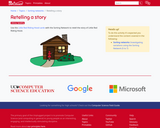
Use the Little Red Riding Hood cards with the Sorting Network to retell the story of Little Red Riding Hood.
- Subject:
- Applied Science
- Computer Science
- Material Type:
- Activity/Lab
- Provider:
- CS Unplugged
- Date Added:
- 08/14/2019

Use the Little Red Riding Hood cards with the Sorting Network to retell the story of Little Red Riding Hood.

This lesson begins by following up to the previous lesson in which students were instructed to politely refuse one single-use item. Students will observe how one community in South America makes something wonderful from trash. Students will learn the importance of reducing their trash by actively participating in a trash-sorting activity, and demonstrate the ability to reuse trash by making a "trash to treasure" product. This lesson was developed by Lee Ann Smith as part of their completion of the North Carolina Global Educator Digital Badge program. This lesson plan has been vetted at the local and state level for standards alignment, Global Education focus, and content accuracy.
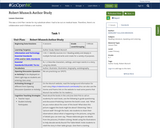
This was a Unit Plan I wrote for my substitute when I had to be out on medical leave. Therefore, there's no collaboration and it follows a set routine.
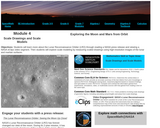
This is a set of three, one-page problems about the scale of objects in images returned by spacecraft. Learners will measure scaled drawings using high-resolution images of the lunar and martian surfaces. Options are presented so that students may learn about the Lunar Reconnaissance Orbiter (LRO) mission through a NASA press release or by viewing a NASA eClips video [4 min.]. This activity is part of the Space Math multi-media modules that integrate NASA press releases, NASA archival video, and mathematics problems targeted at specific math standards commonly encountered in middle school.
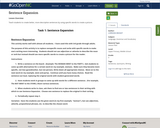
Teach students to create better, more descriptive sentences by using specific words to create a picture.

Work In Progress: These short poems feature sight words and introduce Kindergarten and First Graders to basic Library concepts. I pair them with activities from Write-N-Seek Sight Words by Immacula A. Rhodes (New York: Scholastic, 2017) to introduce the topic of the lesson and to activate prior knowledge.
How I use them:
As students are coming in and finding their seats, they pick up a copy of the sight word poem that has one of Rhodes’ activities on the other side. They begin doing the activity while we are waiting for everyone to get seated. Once everyone is seated, I direct them to flip over to the sight word poem side. It’s OK that they didn’t all finish the activity. They can finish it later or use it to engage with caregivers at home. I encourage the students to read the poems over and over again with their caregivers in order to help them develop fluency in reading.
For Kindergarten, I read the complete poem, then I have them echo-read line-by-line. For First Grade, I read the complete poem, then we all read the poem together. Reading the poem first helps prepare the students for success in the choral reading. I never ask students to cold-read aloud in the media center. Reading aloud is a stressful and embarrassing task for many students and I don’t want them to associate the library with stress and embarrassment! Reading the poem with expression is important. It helps engage the students and echoing the expression helps them develop fluency and comprehension for their own reading.
The poems are designed to introduce library lessons and serve as my Activator for the lessons.
Classroom teachers sometimes follow up by having students work in pairs to practice reading the poems with expression.
I hope you find these poems contribute to your students’ success!
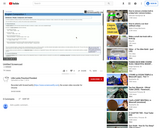
Using screetastify to give a brief lesson on simple senteces, with an embeded quiz.
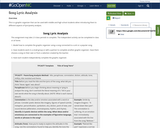
This is a graphic organizer that can be used with middle and high school students when introducing them to different aspects of lyric/poetry analysis.
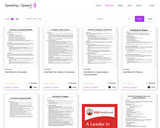
materials exchange site for augmentative communication. This site covers all levels and all grades. I had to choose a grade level to add it to this group.
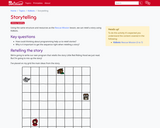
Allowing students to make up their own story provides integrated learning in both creative writing and programming.

Behavior log for tracking specific student behavior
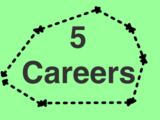
Students need exposures to careers that interest them. This activity provides them time to form their own concepts and ideas reguarding jobs that interest them. They can be given help as needed, but the finished product will be all theirs.
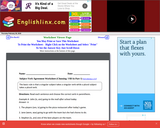
Students read each sentence and choose the correct verb for sentences 1-6 and write the present-tense of each verb in parentheses that agrees with the number in sentences 7-11.
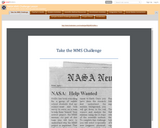
This is a challenge-based activity set designed to have students explore and research the Magnetospheric MultiScale Mission (MMS). Students will explore the purpose and relevance of the mission as well as the scientific methodologies. Activities include application of the scientific method, problem solving strategies, research, collaboration, critical thinking and communication. Links to resources and appropriate web 2.0 tools are provided through a shared livebinder.
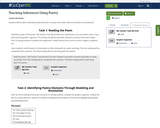
Students will be able to identify literary elements in a poem and make inferences based on text evidence.
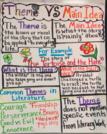
Attched and or embedded is a teacher's lesson plan for teaching Theme using a short story called Fish Cheeks. This short story needs visuals added to better support ELLs in the main classroom. Link
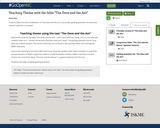
Students determine the moral/lesson of "The Dove and the Ant" and answer guiding questions. An extension research question is included.
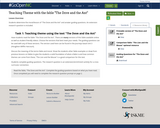
Students determine the moral/lesson of "The Dove and the Ant" and answer guiding questions. An extension research question is included.
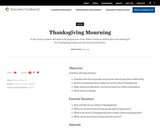
In this activity, students will explore the perspectives of two Native American authors about the meaning of the Thanksgiving holiday and then write journal entries.

This is a set of three, one-page problems about the sizes of moons in the solar system. Learners will use decimals to compare the sizes and distances of Saturn's moons to the center of Saturn. Options are presented so that students may learn about the Cassini mission through a NASA press release or by viewing a NASA eClips video [4 min.] about these and other moons in our solar system. This activity is part of the Space Math multi-media modules that integrate NASA press releases, NASA archival video, and mathematics problems targeted at specific math standards commonly encountered in middle school.